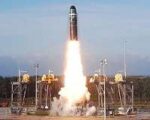The European Space Agency (ESA) is pushing forward with its Skimsat mission—an ambitious initiative to validate the viability of Very Low Earth Orbit (VLEO) platforms for Earth observation and space situational awareness (SSA). In collaboration with U.S.-based Redwire Corporation and France’s Thales Alenia Space, the project aims to deliver a demonstrator spacecraft that can operate at altitudes below 300 km while minimizing drag through novel materials and systems.
Skimsat Concept: Operating in the VLEO Frontier
Skimsat is part of ESA’s Discovery program and seeks to explore the operational benefits of placing satellites in Very Low Earth Orbit—typically defined as altitudes between 180 km and 300 km. Operating at these altitudes offers significant advantages for optical payloads due to reduced atmospheric distortion and improved ground resolution. However, it also presents major challenges related to atmospheric drag, orbital lifetime, thermal cycling, and material degradation from atomic oxygen exposure.
The Skimsat demonstrator is intended as a pathfinder platform that will validate technologies enabling long-duration operations in this extreme orbital regime. According to ESA materials reviewed by MiliVox Editorial Engine, the spacecraft will be equipped with advanced drag-compensation systems—likely including aerodynamic shaping and potentially electric propulsion—and utilize novel surface coatings or materials resistant to atomic oxygen erosion.
Redwire’s Role: Advanced Materials for Drag Mitigation
Redwire Corporation has been selected by ESA as a key partner for providing advanced materials technology critical to the mission. Specifically, Redwire will supply an Atomic Oxygen Barrier Coating (AOBC), designed to protect external spacecraft surfaces from erosion caused by high-energy oxygen atoms prevalent in VLEO. This coating has previously undergone testing aboard the International Space Station under NASA programs.
In addition to AOBC coatings, Redwire may also contribute deployable structures or thermal control solutions based on its heritage in ISS payloads and commercial LEO platforms. The company’s involvement underscores growing transatlantic cooperation on next-generation space infrastructure amid rising demand for resilient small satellite platforms.
Thales Alenia Space Leads Integration
Thales Alenia Space is acting as prime contractor for the Skimsat demonstrator. The Franco-Italian aerospace firm brings deep experience in satellite bus design—including low-mass structures optimized for LEO—and has previously worked on missions such as Sentinel-1/2/3 under ESA’s Copernicus program. For Skimsat, Thales will likely leverage its PRIMA platform architecture or derivatives thereof adapted for ultra-low orbit operations.
The company is responsible for overall system integration—including payload accommodation, power systems adapted for high-drag environments (where solar panel orientation becomes critical), and avionics capable of frequent orbit maintenance maneuvers. While specific propulsion details have not been disclosed publicly as of September 2025, industry observers expect either cold-gas or electric propulsion modules tailored for continuous drag compensation.
Mission Objectives: EO Performance & SSA Validation
The primary mission goals of Skimsat include:
- Demonstrating stable operation at ~250 km altitude over several months
- Validating optical Earth observation performance improvements from lower altitude passes
- Testing material durability against atomic oxygen erosion
- Assessing orbit maintenance strategies under persistent drag conditions
- Evaluating potential SSA contributions via hosted sensors or passive tracking signatures
The mission could also inform future defense-related applications such as tactical ISR satellites that require rapid revisit rates over theaters of interest—particularly if paired with AI-based onboard processing or inter-satellite links. Additionally, lessons learned from Skimsat may support future debris monitoring constellations operating in similar orbital regimes.
A Strategic Step Toward Sustainable VLEO Operations
The broader strategic rationale behind ESA’s investment in VLEO demonstrators lies in both performance optimization and orbital sustainability. Satellites operating at these lower altitudes naturally deorbit more quickly if left unpropelled—a feature that reduces long-term debris risk compared to higher LEO constellations like Starlink (~550 km). This aligns with emerging regulatory trends emphasizing active deorbiting post-mission.
If successful, Skimsat could pave the way toward a new class of agile microsats optimized for short-lifetime but high-performance missions—especially relevant amid increasing congestion in traditional LEO bands. The use of advanced coatings like AOBC also opens pathways toward more durable satellite skins across all orbital classes where atomic oxygen remains a concern.
Timeline & Future Outlook
The current timeline targets launch readiness by late 2026 or early 2027 pending successful subsystem integration tests throughout 2025–2026. No launch provider has been publicly confirmed yet; however, given ESA’s recent partnerships under the Boost! program and EU SST priorities, options could include Vega-C or rideshare slots aboard Ariane 6 missions.
If validated successfully through on-orbit operations lasting several months or longer at ~250 km altitude, follow-on missions may scale up capabilities including real-time data relay architectures or modular payload bays supporting dual-use EO/SSA applications relevant both commercially and militarily across Europe’s strategic space posture.









